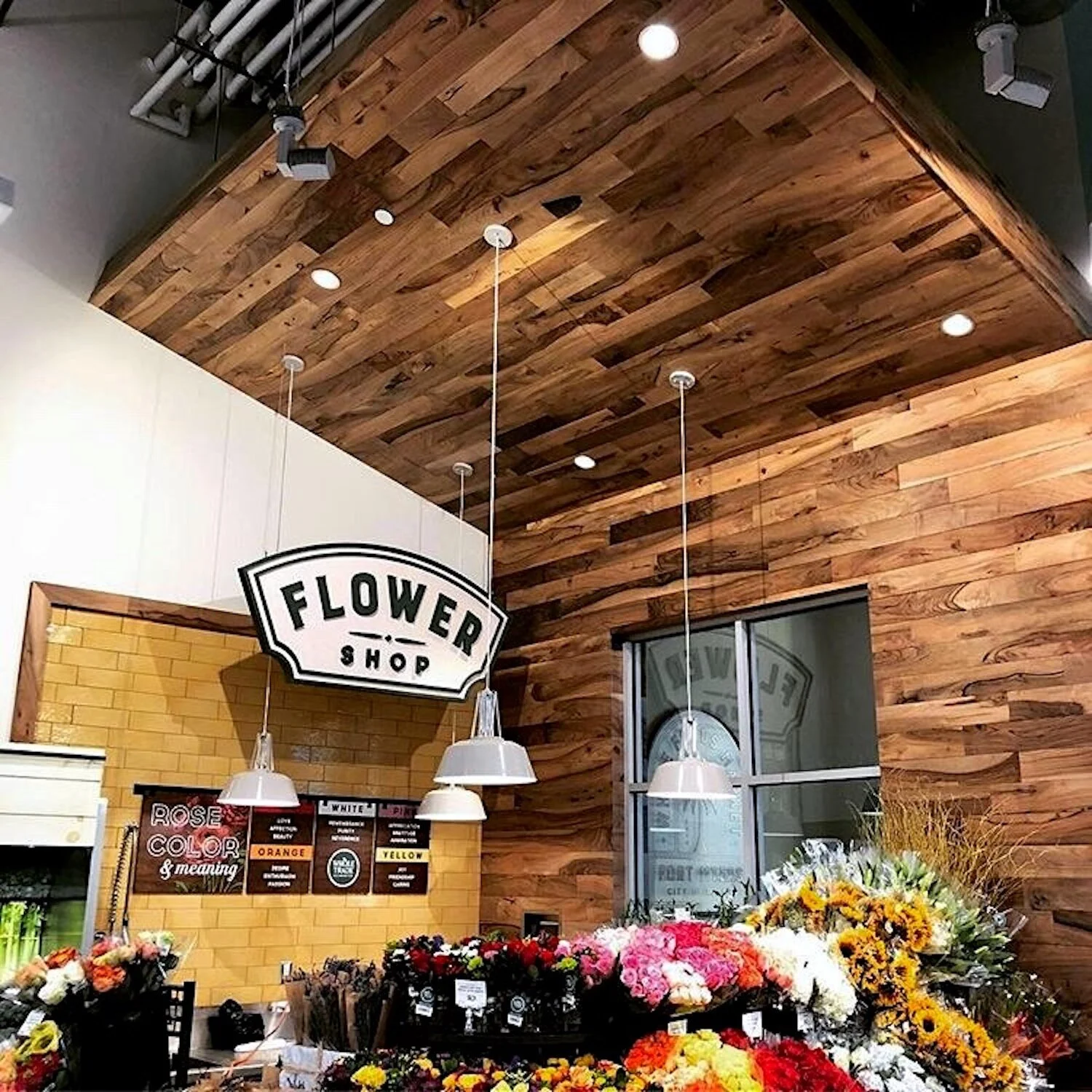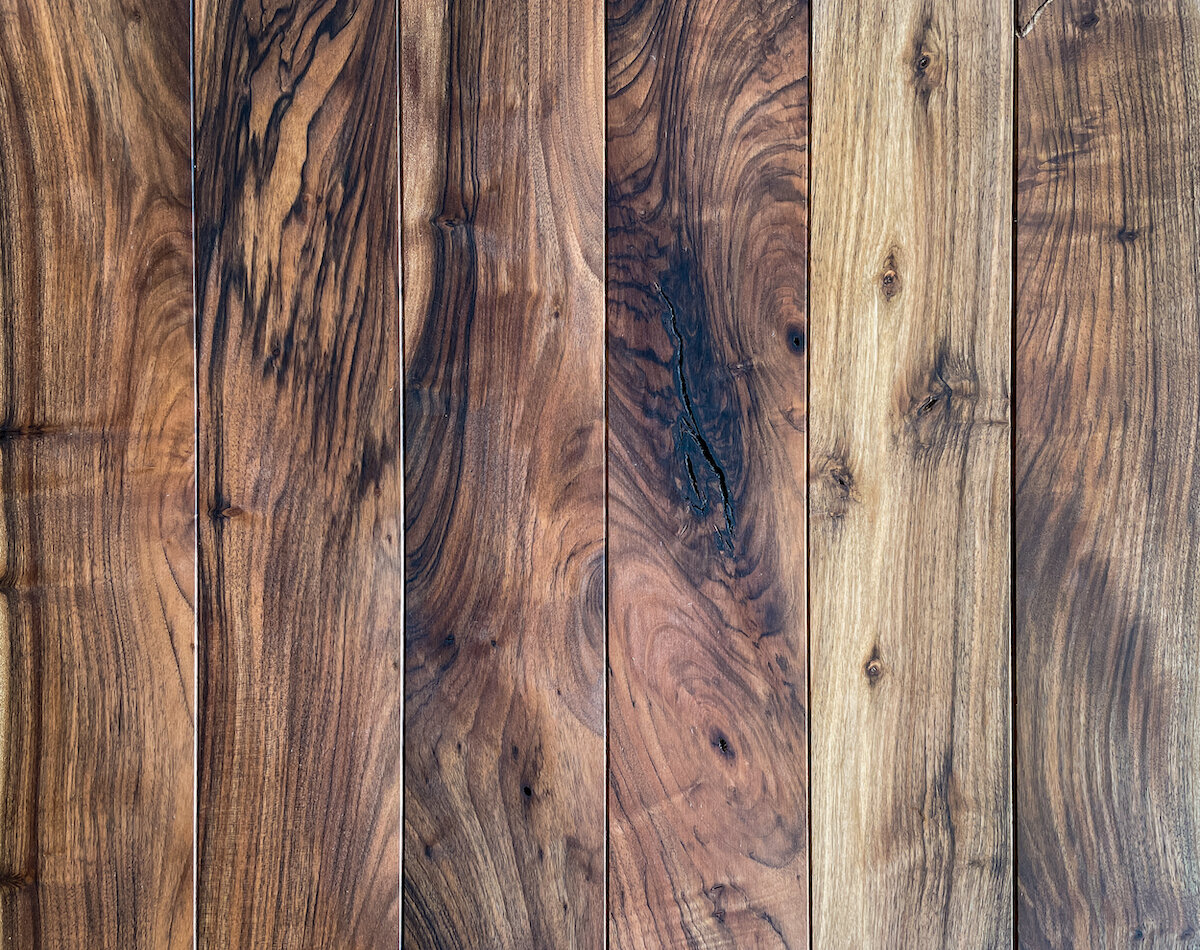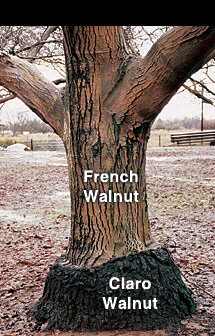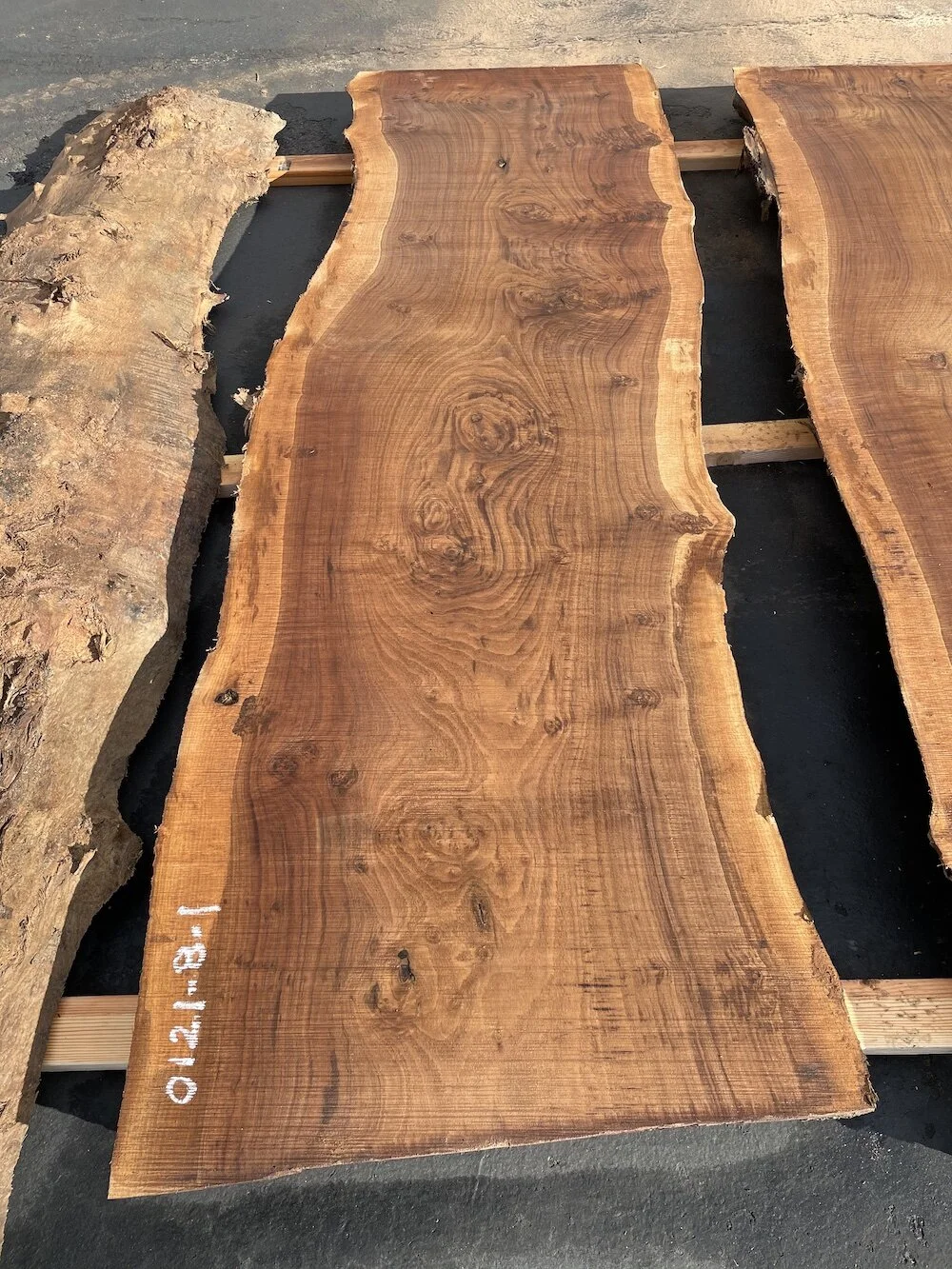Source Story: Bidwell Walnut Salvaged from Orchards and Roadsides
Grafted Claro and French Walnut Make For Unique Swirling Grain in Hardwood Flooring & Paneling
Bidwell Walnut ThinClad paneling installed at Whole Foods Market, Photo Anthology Woods
BIDWELL WALNUT
Claro Walnut root stock grafted to French Walnut. Photo from Cali’co Hardwoods
John Bidwell, photo from Wikipedia
Milled live-edge walnut slabs, Photo by Anthology Woods
Bidwell Walnut tongue and groove solid hardwood flooring, Photo by Anthology Woods
Some Walnut History
Bidwell Walnut (Claro Walnut) is a deciduous hardwood tree native to the upper Sacramento River basin. The unique lumber is known for its rich, swirling colors, and is coveted particularly by gun stock manufactures and master craftsmen. The wood’s history begins with John Bidwell (August 5, 1819 – April 4, 1900).
Bidwell was known throughout California and across the nation as an important pioneer, farmer, soldier, gold miner, statesman and philanthropist. He is famous for leading one of the first pioneering parties, known as the Bartleson–Bidwell Party, along the California Trail, and for founding the city of Chico, California.
Upon seeing the Chico landscape for the first time in 1843, Bidwell provided the following description:
“Hastening on up the valley we struck the trail of the Oregon company on what is now known as Chico Creek, Rancho Chico, and to me one of the loveliest of places. The plains were covered with scattered groves of spreading oaks; there were wild grasses and clover, two, three and four feet high, and most luxuriant. The fertility of the soil was beyond question, and the waters of Chico Creek were clear, cold, and sparkling; the mountains were lovely and flower-covered, a beautiful scene.”
After settling in Chico and taking up his farming career, Bidwell planted Ciecassian walnut trees (Juglans regia), which are sometimes referred to as French, English or Persian Walnuts. The seed stock came from Eastern Europe, offering an entirely new species to the American West. The trees flourished in the deep fertile soils along the Sacramento River Basin. The area’s “vina loam” soil paired with the mild Mediterranean climate and immediate access to water made the area extremely suitable for agricultural endeavors.
The trees eventually cross pollinated with the native Nporthern Californian walnut, or Claro walnut (Juglans hindsii). These large, majestic walnut trees were planted along road ways and in-home yards. Their root stock, which was eventually used commercially as a graft to French and English walnut, was used in the early walnut orchards. The Claro Walnut has a robust root stock that is more resistant to insects and disease and more adapted to local soil than the French walnut, which produces tastier nuts. When grafted together, the result is a walnut with a larger base and a smaller, easier-to-harvest crown.
Bidwell walnut trees are no longer planted and are becoming increasingly fewer and fewer. Our Bidwell Walnut comes from old, dying, diseased, hazardous or wind-shruken trees that are salvaged and transformed into unique, timeless wood paneling and flooring. These trees are saved from becoming wood chips, biomass or other by-products, and instead are salvaged for their beautiful lumber. Bidwell walnut lumber is hard to obtain and challenging to dry, but its beauty is unmatched.
Bidwell Walnut in an Interior Design
When designing with Bidwell Walnut, especially choice material, note that this wood has major visual impact. It will most likely become the star of the design! Competing with the depth and variety of its colors and intense figure of the walnut is not recommended.
A spacious and bright living room is an ideal setting for dark, deep walnut shades, or opt to integrate the wood into a more moody, opulent space for a striking look. Try integrating the wood into designs as accent paneling or as dramatic ceiling cladding. It can be used in a contemporary setting to give the space extra warmth and charm, or in a more rustic design to add luxurious, ornate appeal. However you use it, adding Bidwell Walnut to an interior space will surely add a unique and one-of-a-kind touch with lasting quality.






